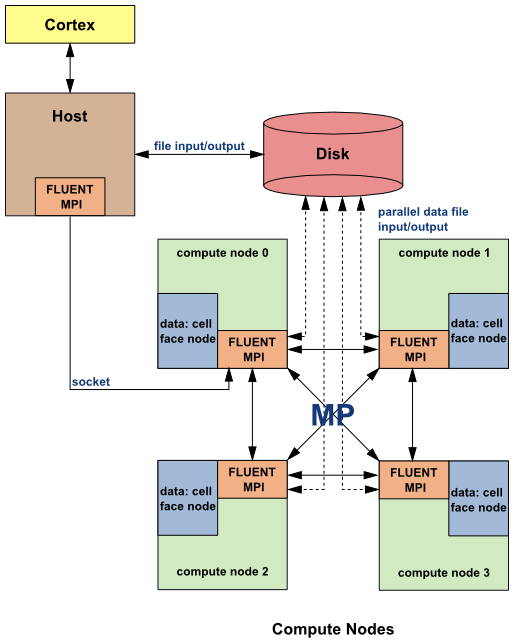Ansys Fluent is a state-of-the-art computer program for modeling fluid flow, heat transfer, and chemical reactions in complex geometries.
Ansys Fluent is written in the C computer language and makes full use of the flexibility and power offered by the language. Consequently, true dynamic memory allocation, efficient data structures, and flexible solver control are all possible. In addition, Ansys Fluent uses a client/server architecture, which enables it to run as separate simultaneous processes on client desktop workstations and powerful compute servers. This architecture allows for efficient execution, interactive control, and complete flexibility between different types of machines or operating systems.
Ansys Fluent provides complete mesh flexibility, including the ability to solve your flow problems using unstructured meshes that can be generated about complex geometries with relative ease. Supported mesh types include 2D triangular/quadrilateral, 3D tetrahedral/hexahedral/pyramid/wedge/polyhedral, and mixed (hybrid) meshes. Ansys Fluent also enables you to refine or coarsen your mesh based on the flow solution.
You can read your mesh into Ansys Fluent, or, for 3D geometries, create your mesh using the meshing mode of Fluent (see the Fluent User’s Guide for further details). All remaining operations are performed within the solution mode of Fluent, including setting boundary conditions, defining fluid properties, executing the solution, refining the mesh, and postprocessing and viewing the results.
The Ansys Fluent serial solver manages file input and output, data
storage, and flow field calculations using a single solver process
on a single computer. Ansys Fluent also uses a utility called cortex that manages Ansys Fluent’s user interface
and basic graphical functions. Ansys Fluent’s parallel solver enables
you to compute a solution using multiple processes that may be executing
on the same computer, or on different computers in a network.
The Ansys Fluent solver manages file input and output, data storage, and
flow field calculations. Processing involves an interaction between Ansys Fluent, a host
process, and one or more compute-node processes. Ansys Fluent interacts with the host process
and the compute node(s) using a utility called cortex, which
manages Ansys Fluent’s user interface and basic graphical functions.
Ansys Fluent’s serial solver uses a single compute node, whereas the parallel solver computes a solution using multiple compute nodes that may be executing on the same computer, or on different computers in a network.
For more information about Ansys Fluent’s parallel processing capabilities, message passing interfaces (MPI), and so on, refer to Parallel Processing in the User's Guide.
All functions required to compute a solution and display the results are accessible in Ansys Fluent through an interactive interface.
For more information, see the following sections:



